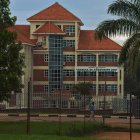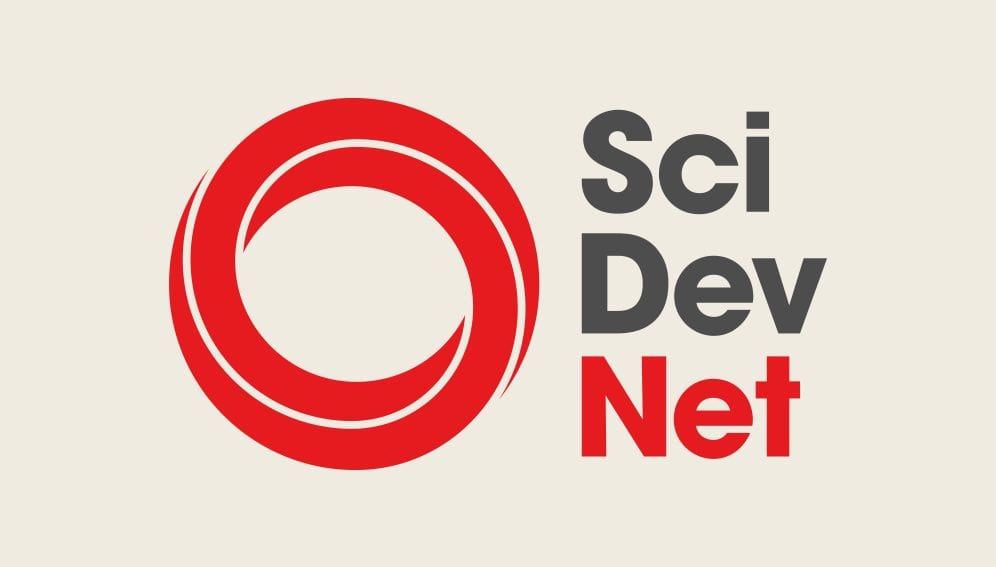Send to a friend
The details you provide on this page will not be used to send unsolicited email, and will not be sold to a 3rd party. See privacy policy.
Fostering a research culture has put Uganda‘s Makerere University back on its feet and is inspiring others, says Peter Wamboga-Mugirya.
Patrick Okori, a crop scientist at Makerere University in Uganda, is breaking a departmental habit of 40 years. He is employing a postdoctoral fellow.
“Today,” beams the triumphant scientist from behind his spectacles, “I have been able to employ the very first postdoctoral fellow in the department. And I have also trained 17 postgraduates, 14 MScs and three PhDs over the last four and a half years.”
Across the university other scientists tell similar stories as Uganda’s highest seat of education gradually regains its prestigious reputation of 40 years ago.
Makerere was founded in 1922, under the British colonial administration, as Makerere Technical School. After independence in the 1960s it developed an international reputation, nurturing many East African leaders. It became an independent university in 1970.
But after 15 years of political turmoil, beginning in 1971, Makerere was almost bankrupt. It was losing its underpaid teachers. Those that remained supplemented their incomes through other work, leaving little time for tutoring their students. Research was at the bottom of the agenda, as was exposure to the international academic scene.
As a result, the general attitude was “a lack of appreciation for the relevance of research, a lack in experience and skills for doing research and an emphasis on financial gain as the key motive for undertaking research,” according to an analysis of Makarere commissioned by Canada’s International Development Research Centre.
Back from the brink
But Makerere is turning itself around. Change began in the early 1990s. Makerere devised a series of university-wide strategic plans. In 1992 it went semi-private, a pivotal move that generated much-needed revenue from students (although science benefited less than other subjects).
It is the changes of the last decade, however, that are attracting international interest. As a result of them the university has started producing healthy numbers of PhD students and has created a vibrant research culture.

The Faculty of Computing and Information Technology brings Internet access to all
Flickr/ibeatty
Makerere’s buildings reflect its chequered story. The main building, with its 1920s British colonial architecture and its sporadically chiming clock, dominates the campus, but the tallest and newest building houses the Faculty of Computing and Information Technology.
Donors who have helped Makerere’s transition include Norad, the Pfizer Foundation and the Carnegie Corporation. But the key player today is the Swedish International Development Agency (Sida), with its Bilateral Collaborative Research Support programme worth 238 million Swedish Kroners (US$27 million). In 1999 Sida started working with Makerere to help it reach a position where it could set about finding its own solutions to Uganda’s problems.
Initially, the agency worked with individual researchers and faculties. But a bigger idea emerged: that the changes they were helping to bring about would endure only if the background context — the management, the money, the procurement, the infrastructure — were also transformed.
Support at all levels
Sida decided to engage at all levels of the university as well as with influential outsiders such as the government. That way it might regenerate research and improve analytical thinking — and thus evidence-based decision-making — for the whole of Uganda.
“The aim of the programme is to support an environment that is conducive for research and research training,” says George William Nasinyama, deputy director in charge of research at the School of Graduate Studies — the coordinating office for research at Makerere and a nucleus for its transformation.
Hannah Akuffo, Sida’s officer in charge of the bilateral support programme, agrees, saying, “It is important for the researcher to have an environment conducive to research, otherwise it leads to frustration”.
The aim is to instill a research culture, producing qualified lecturers who build research groups around themselves.
The reformers selected some research themes that would encourage cross-disciplinarity. One, for example, was Lake Victoria and other water resources. Pursuing this drove faculties to pool their information, says Nasinyama.
Okori certainly feels this first goal has been successful. After training abroad he might have returned to a harried researcher’s existence with few tools, little money and inadequately trained staff. Instead, he has a new laboratory and settling-in funds.
He and his collaborators plan to train up to 17 more graduate students in the next four years.
International winners
Makerere’s vice chancellor, Livingstone Luboobi, notes that units that have been supported under the programme are now able to search for funding themselves. “We now write competitive research proposals that win funding. About 15 years ago, this wasn’t the case, ” he says. Okori, for example, has already won several research grants.
Another central objective — to increase the number of staff with PhDs — is also well underway, with 156 PhD students trained since 2000.
Akuffo says this “provides a bottom-up approach to improvement,” adding, “It has sometimes been frustrating for the PhD candidates, but it has led to many positive changes.”
Developing information communication technology (ICT) and library support was a third key goal. Akuffo believes this is the single most important outcome of Sida’s intervention.
The university developed an ICT master plan and then solicited several funding sources.
Now it is surging ahead, with more than 8,000 open-access electronic journals available. Having widespread internet access has also revolutionised collaboration and supervision. It has put Makerere on the global research radar.
Makerere’s ability to coordinate and administrate research programmes has also been enhanced under the programme through the development of its school of graduate studies.
Today, nearly 32,000 students, young and old — and nearly half of them female — frequent the campus. Over 2,000 — just over six per cent — are international. There are 22 academic units and the university’s annual budget is about US$56million. Close to 5,000 students graduate each year.
Still a way to go
But all is not yet perfect and some successes have heightened the challenges. The recent report for IDRC, which it commissioned to assess its own support to the university, highlighted the strain caused by the enormous number of students, up from just 7,000 in the 1990s.
Problems include large classes, increased teaching and marking loads and poor salaries, said the IDRC, noting that “at the same time, [staff] are facing an increasing pressure to conduct research and publish”.
Meanwhile there is competition for students — whose revenue is vital — from the rising number of private universities in Uganda. Others say that donors are in general unwilling to fund desperately-needed new buildings. The halls of residence, for example, suffer from water shortages and the occasional burst sewer.
Akuffo agrees there are many challenges ahead, singling out “the inability of Makarere to work out a more efficient way to procure materials needed for doing research” as one that endangers a lynchpin of the ‘enabling culture’.
“This needs to be sorted out otherwise it will continue to frustrate researchers,” she says.
Success is contagious
But despite the challenges, the future looks promising — and not just for Makerere.
Nasinyama says Makerere’s successes are catching the attention of other public universities in Uganda who are coming to it for help — for example with staff training. “We now have the potential to develop world class centres of excellence in regional development issues such as health, agriculture, engineering, technology and social sciences,” he adds.
Eli Katunguka Rwakishaya, director of Makerere’s School of Graduate Studies, has attributed the progress to Sida supporting both university and national priorities; promising long-lasting commitment involving considerable investment, and the “deep, interactive partnership” the agency has fostered between Ugandan and Swedish researchers.
And Luboobi says there has been a major shift in thinking and new ways of working. “I recall when we used to sit and just wait for interested partners or donors’ sympathy,” he says.
“The programme has instilled a new culture of working for ourselves and no longer waiting for manna to fall from heaven.”














